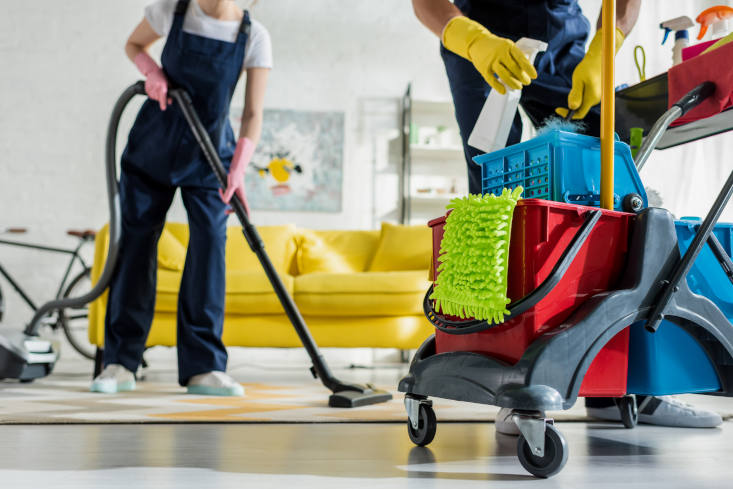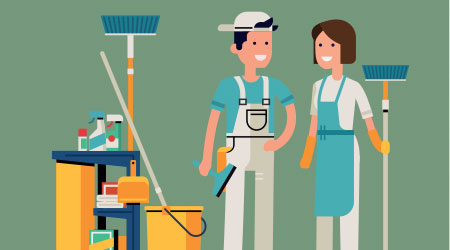Comprehending the Need for Extensively Decontaminating and Sanitizing Frequently Touched Surfaces in High-Traffic Areas
In the world of public health and safety and security, the meticulous disinfection and sanitization of regularly touched surfaces in high-traffic locations stand as paramount actions in preventing the spread of damaging microorganisms. The relevance of this method prolongs much past simple cleanliness, delving right into the realm of illness prevention and neighborhood health. By discovering the different facets of surface area disinfection, from the risks connected with ignoring cleansing methods to the efficient approaches that can be employed, a clearer understanding emerges of the vital role these methods play in securing public health and wellness. As we browse this discussion, it comes to be evident that the implications of comprehensive surface sanitation resound not just within the confines of a certain atmosphere but also resonate on a wider range, affecting the wellness and safety of individuals throughout varied public settings.
Significance of Surface Area Sanitation
Emphasizing the comprehensive sanitation of high-traffic surface areas is essential in preserving a sanitary atmosphere and preventing the spread of dangerous virus. High-touch surfaces such as door takes care of, light switches, lift switches, and counter tops work as reproducing grounds for microorganisms and viruses. Routine sanitation of these surface areas is necessary to lower the threat of contamination and transmission of ailments.
By carrying out a durable sanitation protocol, companies and establishments can create a much safer setting for site visitors, clients, and employees. Appropriate surface area sanitation not only mitigates the spread of transmittable diseases but likewise imparts confidence in the tidiness and security of the properties. This aggressive method shows a commitment to health and wellness and health, which is especially important in high-traffic areas where the probability of direct exposure to virus is increased.
Moreover, surface disinfection plays a crucial role in total infection control techniques. Integrated with hand health methods, using masks, and maintaining physical distancing, detailed sanitation of high-touch surface areas creates a thorough protection against the transmission of harmful microorganisms. Prioritizing surface sanitation is an essential component of a holistic approach to health and wellness in common areas.
Dangers of Overlooking Cleaning Practices
Overlooking complete sanitation of high-traffic surfaces significantly enhances the risk of viral and microbial contamination, presenting a major threat to the health and safety of people frequenting these spaces. Failure to carry out proper cleansing methods can result in the buildup and spread of harmful virus, including infections and microorganisms, on often touched surfaces such as doorknobs, hand rails, elevator buttons, and kitchen counters.

Moreover, overlooking the significance of extensive cleaning not only compromises the health of people but likewise threatens efforts to maintain a hygienic and clean environment. It is important to recognize the relevance of correct disinfection methods in stopping the spread of infections and securing public wellness.
Reliable Sanitation Techniques
To maintain optimum tidiness and minimize the threat of contamination on high-traffic surfaces, utilizing effective sanitation methods is crucial. One of one of the most reliable and common sanitation approaches is using chemical disinfectants. These items can vary in stamina and make-up, with some targeting specific pathogens like microorganisms or viruses. It is vital to follow the producer's guidelines for correct dilution, contact time, and ventilation when utilizing chemical disinfectants to guarantee their performance - defrosted and cleaned every few months.
Another effective method is the use of UV-C light. UV-C light has been shown to be effective in killing a broad range of bacteria by disrupting their DNA framework, Get More Information hence avoiding them from reproducing. It is vital to use UV-C light appropriately, making certain that the appropriate strength and direct exposure time are applied to attain the preferred disinfection outcomes.
Furthermore, utilizing vapor cleansing as a sanitation method can be very effective, specifically on surface areas that are heat-resistant. Heavy steam can pass through porous surface areas and kill microorganisms, viruses, and other virus effectively. When making use of steam cleaning, it is necessary to ensure that the surface gets to the called for temperature level for a sufficient quantity of time to guarantee appropriate sanitation.
Effect on Public Health
The maintenance of high criteria of cleanliness and disinfection on high-traffic surfaces plays a vital duty in guarding public health and wellness. Frequently touched surfaces in locations with high tramp, such as doorknobs, hand rails, lift switches, and washroom facilities, serve as breeding premises for damaging virus.
Reliable hygiene methods not just secure individuals from falling ill however likewise add to the overall health of society. Public health authorities stress the significance of maintaining clean environments to stop episodes and include the spread of ailments. In click here for more high-traffic areas like flight terminals, colleges, health centers, and public transportation systems, the influence of extensive disinfection measures can not be underrated. Prioritizing the sanitization of often touched surfaces is an aggressive technique to promoting public health and boosting the security of people in shared spaces.
Executing Normal Cleaning Procedures
Quickly setting up and adhering to a constant routine of cleaning procedures is critical for maintaining the tidiness and security of high-traffic surfaces. Normal cleaning procedures are essential in protecting against the buildup of bacteria and microorganisms on regularly touched surfaces, specifically in areas with high foot traffic. By implementing an organized strategy to cleaning, companies can successfully reduce the danger of condition transmission and develop a healthier setting for staff members, customers, and the public.
To develop a reliable cleaning routine, it is crucial to determine high-traffic locations that call for frequent interest. These locations might consist of doorknobs, hand rails, elevator switches, toilet facilities, and common devices. Applying a regular cleansing routine that targets these surface areas numerous times a day can considerably minimize the spread of unsafe bacteria and viruses.
Additionally, using proper cleaner and disinfectants is essential to making sure that surface areas are completely sterilized. Routine training of cleansing team on correct cleansing strategies and the importance of adherence to the cleaning schedule is also vital in maintaining a sanitary setting. By focusing on consistent cleaning methods, companies can promote the health and wellness and wellness of individuals who interact with these high-traffic surface areas.

Final Thought
In conclusion, it is important to focus on complete disinfection and sanitization of often touched surfaces in high-traffic Scrub the Surfaces locations to prevent the spread of harmful virus and preserve public health. It is important to acknowledge the value of preserving clean surface areas in high-traffic areas to ensure the health of the area.
In the realm of public health and security, the precise sanitation and sanitization of often touched surfaces in high-traffic locations stand as critical actions in stopping the spread of hazardous virus. By checking out the various elements of surface sanitation, from the threats connected with neglecting cleansing protocols to the reliable methods that can be used, a clearer understanding emerges of the essential function these practices play in securing public wellness.Additionally, using steam cleansing as a disinfection approach can be highly efficient, specifically on surfaces that are heat-resistant. When making use of heavy steam cleansing, it is important to make sure that the surface area gets to the required temperature level for a sufficient amount of time to ensure correct sanitation.
In conclusion, it is crucial to focus on detailed disinfection and sanitization of frequently touched surfaces in high-traffic locations to protect against the spread of damaging virus and keep public health.